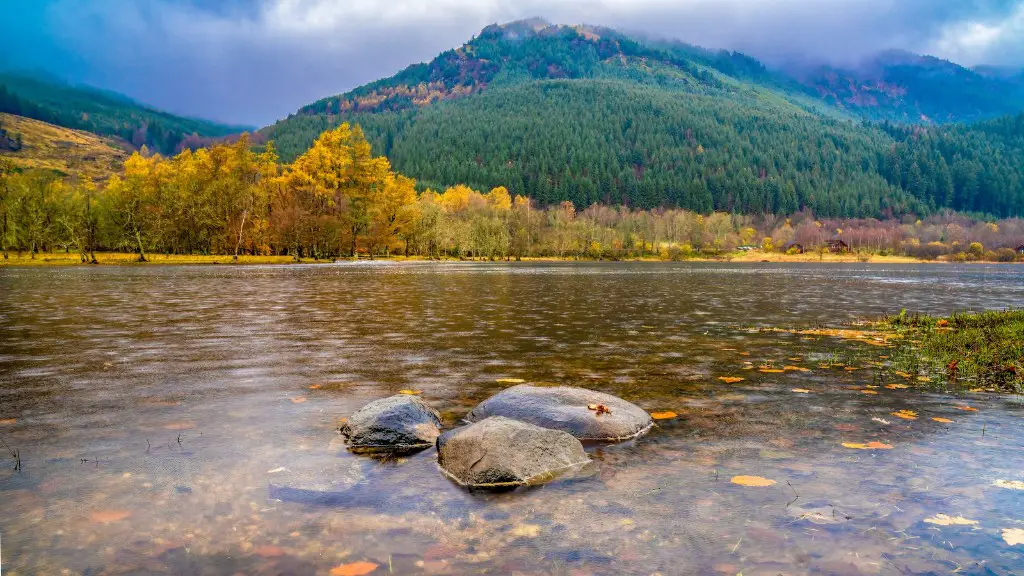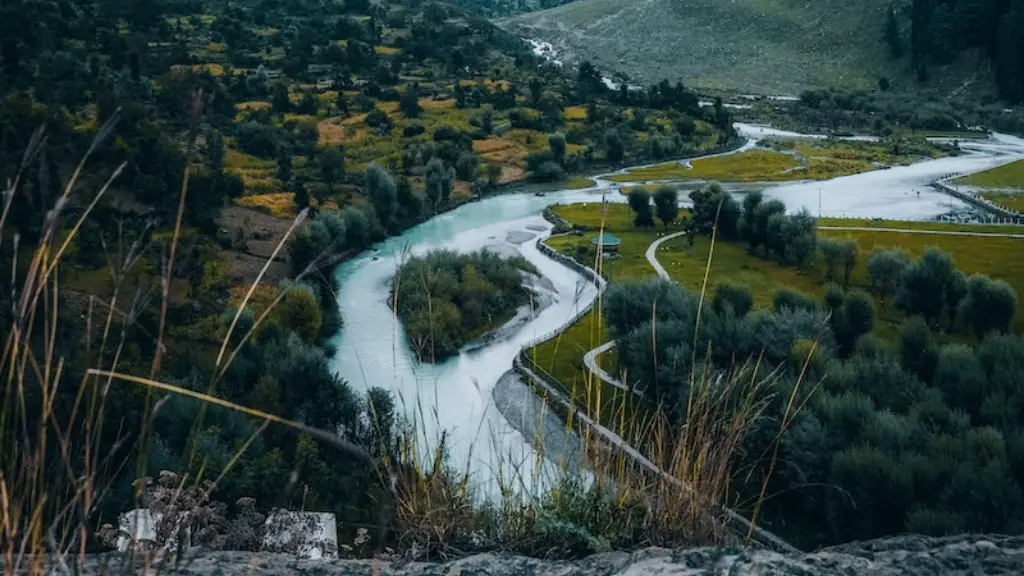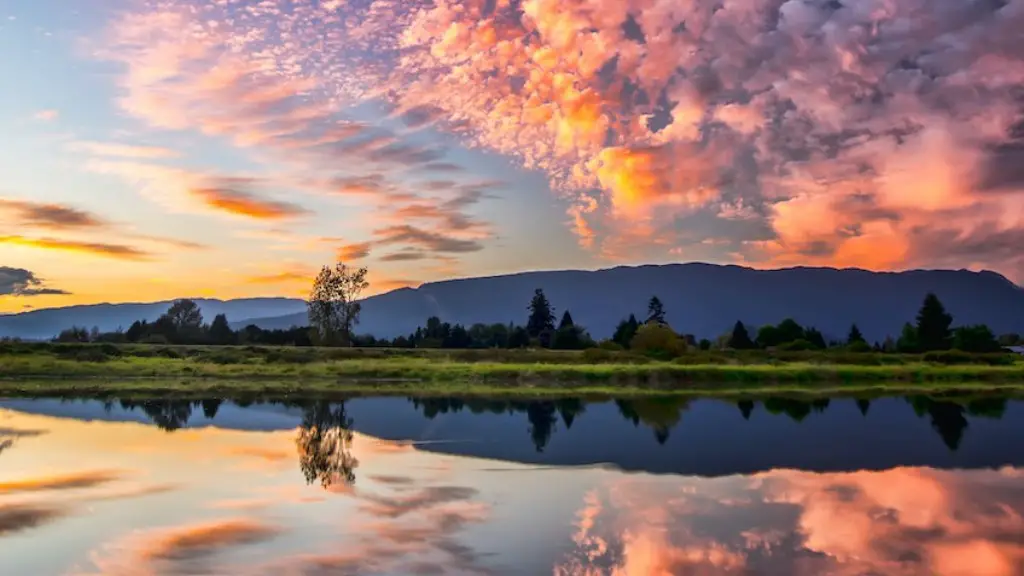The Ganges river is one of the most sacred rivers in India and is also one of the most polluted. Every year, millions of Hindus take a dip in the river as a part of their religious rituals. However, the river is also riddled with pollution from industrial and domestic waste. A recent study found that the river is so polluted that it contains high levels of coliform bacteria, which can cause cholera, dysentery, and other diseases.
Although the Ganges River is considered one of the most sacred rivers in Hinduism, it is also one of the most polluted rivers in the world. The river is polluted with industrial and municipal waste, as well as human sewage. In addition, the burning of funeral pyres along the river’s banks adds to the pollution.
Is the Ganges river clean now?
The Ganges is one of the most sacred rivers in India, and is also one of the most polluted. Today, it is considered to be the fifth-most polluted river in the world. An Indian photographer has noted that no one in India spoke of the Ganges as being polluted until the late 1970s. However, pollution had been an old and continuous process in the river by the time people were finally acknowledging it.
The pollution of the Ganges is a huge environmental and health problem. The river is used for drinking, bathing, and washing by millions of people, and is also a major source of irrigation for agriculture. The untreated sewage dumped into the river, industrial waste, agricultural runoff, remnants of partially burned or unburned bodies from funeral pyres, and animal carcasses all contribute to polluting the Ganges. High levels of disease-causing bacteria and toxic substances have also been found in the Ganges. This pollution is a major contributor to the high rates of disease and death in the region.
What diseases can you get from the Ganges river
Cholera is a serious problem in many parts of the world, particularly in developing countries. The Ganges delta in India is a particularly problematic area, as it is the source of most of the world’s cholera epidemics. Cholera is spread through contaminated food and water, and symptoms usually include diarrhea, vomiting and leg cramps. Treatment is typically with oral rehydration therapy or, in severe cases, intravenous fluids. Prevention is through better sanitation and hygiene, as well as vaccination in high-risk areas.
The Ganges river is one of the most important rivers in India. It is a sacred river for Hindus and is also a major source of water for many people in the country. However, the river is now in danger. Too much water is being taken out for farming and other uses, and this is causing the river to dry up. Also, barrages and dams have disrupted the Ganges’ natural flow, and pollution from homes and industries have badly contaminated what’s left of the river. The situation is critical, and something needs to be done to save the Ganges river.
Do people drink water from the Ganges?
The river is also considered sacred by Hindus, and is used for religious ceremonies.
The Ganges river is one of the most important rivers in India. It is a vital water source for hundreds of millions of people, who rely on it to drink, bathe and irrigate land. The river is also considered sacred by Hindus, and is used for religious ceremonies.
The pollution in the Ganga and other rivers is linked to the high rate of waterborne illnesses in India, which kill an estimated 15 million children each year. Researchers have also discovered the emergence of so-called superbugs in Ganges water samples, bacteria resistant to most commonly used antibiotics.
What is the cleanest river in the world?
The Thames River in London is one of the cleanest rivers in the world. The river is home to a variety of fish and other aquatic life and provides a great source of recreation for residents and visitors alike.
The Namami Gange scheme was launched by the Central government in 2015 with an aim to clean the river Ganga. The scheme includes activities like construction of toilets, setting up of sewage treatment plants, and afforestation.
The scheme seems to be working as the river Ganga’s condition has improved significantly. Chief Minister Yogi Adityanath said that Ganga has become clean now and the credit goes to the Central government. He added that the state government is also taking steps to further improve the river’s condition.
Can you swim in the Ganges
The Ganges is a big river and has different types of flow and undertow in places. Swimming is possible in the calmer areas, where there is no undertow, but it’s preferable that one does not swim in the calmer portion as it’s highly polluted.
Hindus believe that sins accumulated in past and current lives require them to continue the cycle of death and rebirth until they are cleansed. If they bathe at the Ganges on the most auspicious day of the festival, believers say they can rid themselves of their sins.
How do people not get sick from the Ganges?
There is a belief among some people that locals have built up an immunity to the river’s bacteria, even if their mission is to clean it up. However, according to Sue Lennox, chief executive of OzGreen, the idea that people who bathe in the river don’t get ill is a myth. She says that the river’s bacteria can cause serious health problems for people, even if they have been bathing in it for years.
The Ganges shark is a species of river shark that is found in the rivers of India. It is one of six species of river sharks found in the world, and is the only one that is endemic to India. The Ganges shark inhabits the River Hooghly in West Bengal, as well as the rivers Ganges, Brahmaputra, and Mahanadi in the states of Bihar, Assam, and Orissa.
Will the Ganges dry up
The paper argues that the flow of rivers will not be affected at all by glacial melt. The majority of river flow is due to rain and snowmelt, which will continue even after the glaciers disappear. This melt will take several centuries, meaning that river flow will not be impacted in the meantime.
The Yamuna is one of the most polluted rivers in the world. The river flows for 855 miles (1,375km) from its source in the Himalayas to New Delhi. The river is polluted with sewage and industrial waste from the city. The river is also used for religious ceremonies, which add to the pollution.
Why is Ganga water not contaminated?
River Ganga is one of the most sacred rivers in India. Hindus believe that the water of the river Ganga is pure and holy. Scientists have now found that there is a scientific reason behind this belief. The water of river Ganga is naturally having bacteriophages, which do not allow bacterial growth. This is the reason why the river water is always pure and clean.
bathing in the Ganga can expose people to high levels of faecal coliform bacteria. These bacteria are present in human and animal waste and can cause serious gastrointestinal illnesses.
Can people bathe in the Ganges river
Hindus believe that the Ganges is a holy river and that it is auspicious to drink, bathe, and scatter the ashes of the dead in its waters. Every year, Hindus from all over the subcontinent make pilgrimage to the many temples and shrines located along the river’s shores. The Ganges is truly a sacred place for Hindus and is a deeply important part of their religion.
It is interesting to note that the water of river Ganga is rich in bacteriophages, which are viruses that specifically target and destroy bacteria. This provides a scientific explanation for why the river water is so effective in preventing the growth of bacteria and other pathogens. This is yet another example of the power of nature in providing us with solutions to our problems.
Conclusion
The Ganges river is one of the most polluted rivers in the world. This is because the river is used as a dumping ground for sewage and industrial waste from the cities and towns along its banks. As a result, the river water is highly contaminated with bacteria and other pollutants.
The Ganges River is one of the most polluted rivers in the world. The river is so polluted that it is often referred to as the “Most Polluted River in the World”. The river is polluted with industrial waste, sewage, and garbage. The river is also polluted with pesticides and fertilizers from the farms along its banks. The pollution in the Ganges River has caused health problems for the people who live along its banks and use the river for their drinking water.





